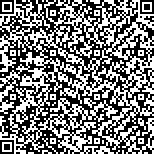本文已被:浏览 36次 下载 52次
Received:October 14, 2023 Published Online:June 20, 2024
Received:October 14, 2023 Published Online:June 20, 2024
中文摘要: 目的 探讨不同性别血清锰(Mn)与非酒精性脂肪肝(NAFLD)的关系。方法 选取2017至2018年美国国家健康与营养检查调查(NHANES)数据库中年龄≥18岁的注册参与者,并排除缺乏超声肝脏瞬时弹性成像数据、血清Mn数据及患有乙型病毒性肝炎、丙型病毒性肝炎、饮酒量显著的人群。按是否患有NAFLD,将纳入人群(4 294例)分为NAFLD组(2 708例)和non-NAFLD组(1 586例),采用电感耦合等离子体动态反应细胞质谱分析仪定量检测血清Mn水平,比较两组人群年龄、性别、种族、婚姻状况、教育、家庭收入与贫困比比值(FMPIR)、身体质量指数(BMI)、吸烟、饮酒、糖尿病、高血压、高脂血症情况及血清Mn水平。计量资料两组间比较采用成组t检验或Wilicoxon秩和检验;计数资料两组间比较采用χ2检验。将男性和女性分别按其Mn水平以四分位法分为Q1~Q4四组,通过多因素logistic回归、限制性三次样条回归分析、交互作用、亚组分析,探讨不同性别血清Mn与NAFLD的风险关联。结果 NAFLD组血清Mn水平明显高于non-NAFLD组,差异具有统计学意义[9.06 (7.25, 11.38) μg/L vs 9.33 (7.54, 11.52) μg/L, Z=2.815, P=0.005]。调整年龄、种族、教育、婚姻状况、FMPIR、BMI、吸烟、饮酒、糖尿病、高血压、高脂血症等协变量后,男性血清Mn Q3组(OR=1.575;95%CI:1.193~2.087),女性血清Mn Q4组(OR=1.725;95%CI:1.313~2.269)与Q1组相比,患NAFLD风险显著增加(P<0.01)。男性和女性血清Mn与患NAFLD的风险均存在正向剂量-反应关系(P<0.01),男性为非线性关系(Pnon-linear <0.01),女性为线性关系(Pnon-linear =0.818)。男性血清Mn与种族、教育之间存在显著的交互作用,女性血清Mn与高血压之间存在显著的交互作用。结论 男性和女性血清Mn与NAFLD的风险显著相关。
Abstract:Objective To investigate the relationship between serum manganese (Mn) levels and non-alcoholic fatty liver disease (NAFLD) in individuals of different genders. Methods Participants aged 18 years or older from the National Health and Nutrition Examination Survey (NHANES) database between 2017 and 2018 were selected, excluding those who lacked ultrasonic liver transient elastography data, serum Mn data, and individuals with hepatitis B, hepatitis C, or significant alcohol consumption. The included population (n=4 294) was divided into NAFLD group (n=2 708) and the non-NAFLD group (n=1 586) according to whether participant had NAFLD or not. Serum Mn levels were quantitatively measured by inductively coupled plasma dynamic reaction cell mass spectrometry. Age, gender, race, marital status, education, family income-to-poverty ratio (FMPIR), body mass index (BMI), smoking, alcohol consumption, diabetes, hypertension, hyperlipidemia, and serum Mn levels were compared between the two groups. Continuous variables were compared by t-tests or Wilcoxon rank-sum tests, while categorical variables were compared by chi-square tests. Males and females were respectively divided into four groups (Q1-Q4) according to their Mn levels by quartile method. Multivariate logistic regression, restricted cubic spline regression analysis, interaction, and subgroup analysis were performed to explore the risk association between serum Mn and NAFLD in different genders. Results Serum Mn level in the NAFLD group was significantly higher than that in the non-NAFLD group[9.06 (7.25, 11.38)μg/L vs 9.33 (7.54, 11.52) μg/L, Z=2.815, P=0.005]. After adjusting for age, race, education, marital status, FMPIR, BMI, smoking, alcohol consumption, diabetes mellitus, hypertension and hyperlipidemia as covariates, male participants in the serum Mn Q3 group (OR=1.575; 95%CI: 1.193-2.087) and female participants in the serum Mn Q4 group (OR=1.725; 95%CI: 1.313-2.269) had significantly increased risks of developing NAFLD when compared to those in the Q1 group (P<0.01). There was a significant positive dose-response relationship between serum Mn and the risk of NAFLD for both males and females (P<0.01), with a nonlinear relationship for males (Pnon-linear<0.01) and a linear relationship for females (Pnon-linear=0.818). Significant interactions were observed between serum Mn and race in males, and between serum Mn and hypertension in females. Conclusion Serum Mn levels in both males and females are significantly associated with the risk of NAFLD.
keywords: Serum manganese Non-alcoholic fatty liver disease Transient elastography of liver Body mass index Hypertension Race Gender
文章编号: 中图分类号:R575.1 文献标志码:A
基金项目:国家自然科学基金面上项目(81673806);中国医药教育协会科研课题(2020KTY001)
引用文本:
